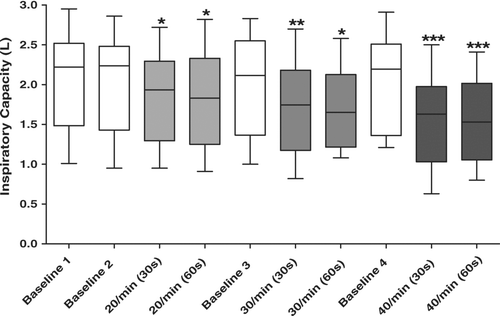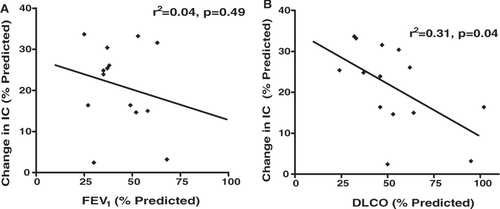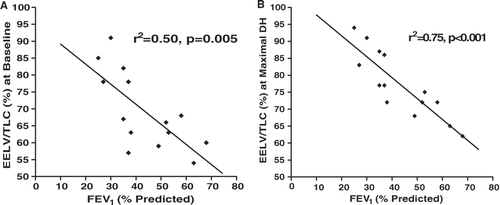Figures & data
Table 1 Patient characteristics
Figure 1 Time course and degree of dynamic hyperinflation produced by metronome paced tachypnea. There is a graded decline in IC corresponding to the graded increase in fR. For each fR the decline in IC occurs by 30 seconds and does not decline further by 60 seconds. The IC returns to baseline between episodes of paced tachypnea. The plot's horizontal line represents the median, the box encompasses the 25th to 75th percentile and the error bars encompass the 10th to the 90th percentile. Repeated Measures ANOVA P < 0.001. * p < 0.05 compared to Baseline 1. **P < 0.05 compared to Baseline 1 and fR 20/min (30s). *** p < 0.05 compared to Baseline 1, fR 20/min (30s and 60s), and fR 30/min (30s and 60s).

Table 2 Inspiratory capacity differences over time and between frequencies of respiration
Table 3 Respiratory rate and PETCO2 at baseline and following 60 seconds of metronome-paced tachypnea

